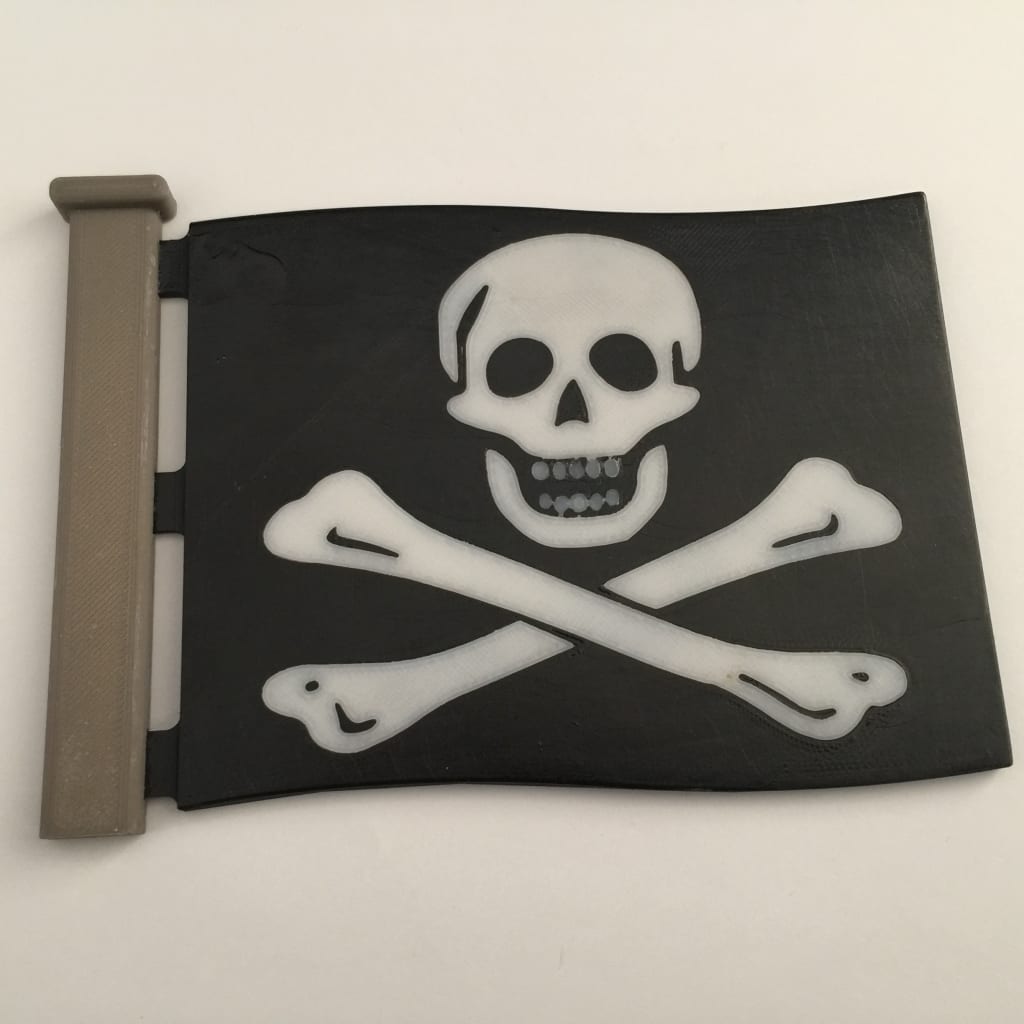"So How Does That Work, Then?"
Answering Your Questions

When people ask what I do and I reply with “I do graphic design using 3D printers,” the usual reaction of people is for their eyes to glaze over and then they say one (or both) of two things: “Ohh, sounds complicated!” or “How does that work then?” I ran a stall at a local event on the 30th of June and heard both of those lines so many times I decided that for my second article I’d do my best to address them both.
Since they’re usually part of a conversion, let’s address them in a conversational way!:
“How does that work then?”
There are several different methods of 3D printing, all varying depending on the kind of things you’re wanting to print and how big your budget is. I’ll get onto different kinds and how they all work another time, but the kind of 3D printing I use is known as ‘Fused Filament Fabrication (FFF)’ or 'Filament Deposition Modelling (FDM).' It uses a plastic filament supplied on a reel, kind of like the filament you get in a garden strimmer, which is fed into the top of the printer and is melted by the hotend (also known as the extruder). The printer’s computer then moves the hotend, which has a small brass or steel nozzle through which the melted plastic flows onto the print bed, to draw out a shape and fill in the inside of it. Then the print bed is moved down (or up, depending on the make of printer) by a tiny amount and another layer is laid down. And then another, and another, slowly building up a 3D object. If you look closely on a 3D printed object you’ll see the layers and the print lines (which I do my very best to sand out, but you can never get rid of them 100%). This, as you can imagine, takes a while; printing something the size of a coaster can take about six hours. Larger models, of course, take longer — the longest print I’ve ever done was a DVD drive stand for my iMac which took 38 hours to print…
“So why is it called 3D printing when you’re not using paper?”
That’s a good question. The simple answer to it is that… people like familiarity. 3D printers used to be known as “Rapid-Prototyping Machines” or other similar terms. When they started going mainstream, being used by people other than industry experts, they acquired the nickname “3D Printers” because people were used to desktop paper printers, and the name just stuck!
“Ohhh, sounds complicated.”
No, not really. Once you get used to how they work, what you need to do to prepare a model for printing, transfer it to the printer, print it, and finish it then it’s pretty simple. If you can drive a car, wire a plug, or put up a shelf, then you can use a 3D printer! it only gets complicated if you want to try some of the more exotic filaments, which can take some experimentation with nozzle temperatures, bed temperatures, etc., or if you want to do serious maintenance on the printer. Yes, the printer will need maintenance; I made the mistake with my first printer of thinking that there was no maintenance needed and I ended up with an awful mess on the print bed (and unfortunately the printer wasn’t really very user-friendly when it came to maintenance). The printer I use now, the Zortrax M200, does need maintenance but it’s fully able to be user-serviced and they even have the instructions online to do anything you need to do. So you just have to follow the instructions!
(You’ll probably hear me going on a lot about the M200 and how fantastic it is, but seriously, if you want to do PROPER 3D printing, get one. It’s THE best printer you can get; it costs a bit, but you really get what you pay for.)
And of course, there’s one question which 99 percent of people ALWAYS ask. And it’s like Alice Cooper and the whole ‘we’re not worthy!’ thing; everyone thinks they’re the first:
“Go on then, make me a gun!”
Sigh…
Certainly, as long as you want a plastic replica, I’ll be happy to make you a Judge Dredd Lawgiver, a Starfleet Type II phaser or Alucard’s Hellsing Arms pistols from the Hellsing anime series. What I can’t (and won’t) do is to make you any form of functioning weapon. 1) That’s VERY illegal and I have no wish to have my collar felt, 2) although functioning one-shot pistols have been made with 3D printers, they’re more likely to explode in your hand than actually fire a round, and 3) I’m a lover, not a fighter…
3D printing has been used to make components for firearms (optics rails, receivers, magazines, etc,) but it’s not suitable for actually making firing components. But if you are a gun owner... use the professionally made stuff. You’ll do much better.
That about wraps it up for this article. As always, you’re very welcome to contact me with any questions, suggestions, ideas for articles and so on. Catch you next time!
Check out my Etsy store here.
Check out the 3D printed jewellery designs in my Shapeways store here.
Twitter: @EXDDesign
About the Creator
Trevor Day
I own and operate a graphic design business, working with 3D printing to create an ever-expanding range of artistic coasters, homewares, gadgets and much more. Check out my range here: www.etsy.com/uk/shop/enterprisexddesign






Comments
There are no comments for this story
Be the first to respond and start the conversation.